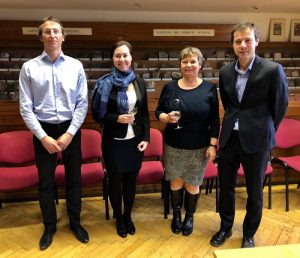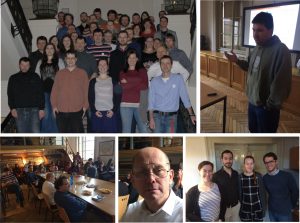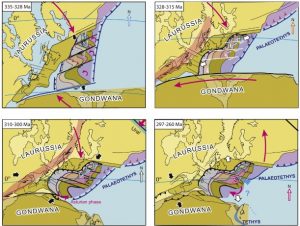 The oldest and until now the only fossil cuttlefish ink sac, possessing microbodies, has been recorded in the Middle Miocene (~13.5-Ma) deposits of the Vienna Basin. The geochemistry of these microbodies has been compared with the ink of the extant genus Sepia. The Raman spectra of melanin from the fossil cuttlefish ink, the S.officinalis melanin, and the synthetic melanin standards, showed identical curves. Therefore, the preservation of delicate cell organelles such as melanosomes has been proven in the fossil material. This investigation also indicates that the melanin (eumelanin) can be resistant to degradation in deep (geological) time.
The oldest and until now the only fossil cuttlefish ink sac, possessing microbodies, has been recorded in the Middle Miocene (~13.5-Ma) deposits of the Vienna Basin. The geochemistry of these microbodies has been compared with the ink of the extant genus Sepia. The Raman spectra of melanin from the fossil cuttlefish ink, the S.officinalis melanin, and the synthetic melanin standards, showed identical curves. Therefore, the preservation of delicate cell organelles such as melanosomes has been proven in the fossil material. This investigation also indicates that the melanin (eumelanin) can be resistant to degradation in deep (geological) time.
Košťák, M., Schlögl, J., Culka, A., Tomašových, A., Mazuch, M., Hudáčková, N. (2018): The unique preservation of Sepia soft tissues in the Miocene deposits (Serravalian, Vienna Basin): Implications for the origin of microbodies in the fossil record. Palaeogeography, Palaeoclimatlogy, Palaeoecology 493, 111-118. (DOI)









 A first long-term (2 years) field experiment indicated how As and other metal(loid) contaminants can be released from As-rich copper smelter flue dust after deposition in contrasting soils. Up to 72% of As was leached out from the flue dust after incubation. The majority of As became highly mobile and could represent a risk for individual environmental compartments (soil, water).
A first long-term (2 years) field experiment indicated how As and other metal(loid) contaminants can be released from As-rich copper smelter flue dust after deposition in contrasting soils. Up to 72% of As was leached out from the flue dust after incubation. The majority of As became highly mobile and could represent a risk for individual environmental compartments (soil, water). On Friday February 3, 2018, Alice Jarošíková defended her PhD entitled “Experimental in situ transformation of smelting wastes in soils”. On the photo, where she is second from the left, you find her together with two reviewers Prof. Edgar Hiller and Prof. Barbora Doušová and her supervisor, Prof. Vojtěch Ettler. Alice thus became a brand new junior team member of the Center. Congratulations!
On Friday February 3, 2018, Alice Jarošíková defended her PhD entitled “Experimental in situ transformation of smelting wastes in soils”. On the photo, where she is second from the left, you find her together with two reviewers Prof. Edgar Hiller and Prof. Barbora Doušová and her supervisor, Prof. Vojtěch Ettler. Alice thus became a brand new junior team member of the Center. Congratulations! All the team of the Center for Geosphere Dynamics met on January 25, 2018 to launch the activities of the project!
All the team of the Center for Geosphere Dynamics met on January 25, 2018 to launch the activities of the project!
